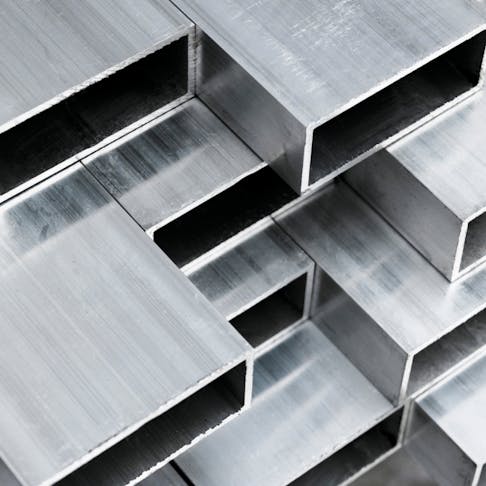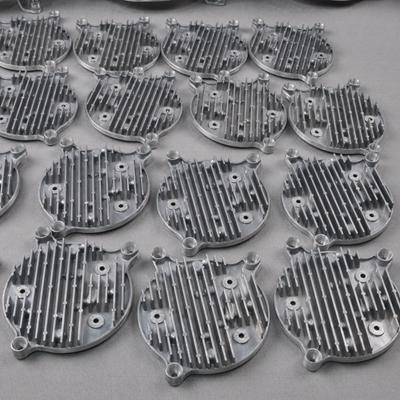Understanding the Procedures Entailed in Aluminum Casting for High-Quality Production
The aluminum casting procedure is a complicated yet crucial procedure for attaining premium manufacturing. It involves several phases, including mold and mildew preparation, melting, pouring, and cooling. Each action calls for careful focus to information to guarantee and avoid problems uniformity. Understanding these procedures can considerably influence the last item's honesty. As one checks out the subtleties of mold and mildew selection and air conditioning strategies, the relevance of each element becomes significantly clear. What elements genuinely determine success in this detailed process?

The Aluminum Casting Process Overview
The aluminum casting process is an extensively utilized production technique that changes molten aluminum right into different shapes and elements. This process begins by warming aluminum up until it reaches a liquid state, permitting it to flow quickly right into mold and mildews. Depending upon the desired final result, various casting approaches can be used, consisting of sand casting, pass away casting, and financial investment casting. Each technique has its special advantages and applications, influencing factors such as manufacturing quantity, dimensional precision, and surface area finish.
Once the aluminum is poured into the mold and mildew, it cools down and solidifies, handling the form of the tooth cavity. After cooling down, the cast piece is gotten rid of from the mold, frequently needing extra procedures like trimming, machining, or surface treatment to achieve the final specs. Generally, the aluminum casting process is important in producing elaborate and durable components for different markets, consisting of automotive, aerospace, and durable goods.
Preparing the Mold for Casting

Cautious prep work additionally involves cleaning the mold and mildew to eliminate any type of impurities that can impact the casting procedure. A thorough evaluation assurances that all parts fit with each other appropriately, avoiding imbalances during pouring. Additionally, using a launch agent can assist relieve the removal of the finished item.
Ultimately, meticulous interest to information throughout mold prep work sets the foundation for an effective casting operation, affecting elements such as dimensional precision and surface quality of the aluminum components generated.
Putting and melting Aluminum
Reliable melting and pouring of aluminum is crucial for achieving top notch castings. The procedure starts by selecting the suitable furnace, which need to offer reliable heat transfer and preserve consistent temperatures. Different sorts of heating systems, such as induction or crucible heating systems, can be made use of based upon manufacturing demands and quantity.
The aluminum has to be warmed to its melting point, usually around 660 levels Celsius (1220 degrees Fahrenheit), while ensuring very little oxidation and contamination. To improve high quality, additives might be presented to improve fluidness and reduce pollutants. As soon as totally melted, the aluminum should be held at a stable temperature prior to putting.
Putting calls for precision to prevent defects such as air moved here pockets or incorporations. Using putting ladles and regulated pouring strategies contributes to a smooth flow right into the mold and mildew. Correct implementation of these steps is crucial for producing spreadings with optimal architectural integrity and surface area finish.
Air Conditioning and Solidification Strategies
After pouring, the air conditioning and solidification of aluminum play an essential role in establishing the last properties of the casting (aluminum casting). Reliable cooling techniques directly affect the microstructure, mechanical buildings, and dimensional precision of the last product. Usual approaches consist of forced air cooling and water spray, which promote uniform temperature level distribution and lessen thermal slopes
The solidification procedure starts as the liquified aluminum sheds heat, changing from fluid to strong. The rate of cooling impacts grain dimension; slower air conditioning can cause bigger grains, possibly minimizing toughness. Furthermore, the usage of chills-- steel inserts that soak up heat-- can enhance cooling prices in specific locations, improving total honesty.
Regulated cooling systems are typically executed to accomplish preferred buildings, such as improved ductility or stamina, by managing the cooling curve. Correct strategies guarantee reputable aluminum castings that satisfy rigorous market requirements.
Completing and Quality Control Actions
Finishing and quality assurance steps are necessary to guarantee that aluminum spreadings fulfill the required specs and performance criteria. After the casting procedure, components go through different ending up procedures, consisting of machining, grinding, and sprucing up. These processes improve surface area top quality, dimensional accuracy, and total looks.
Quality assurance measures play a crucial role in site here ensuring item stability. Examination techniques such as aesthetic analyses, dimensional checks, and non-destructive testing are employed to identify defects like porosity, surface area irregularities, or dimensional errors. Furthermore, comprehensive documentation of each stage of manufacturing helps trace any type of problems back to their source, enabling constant renovation.
Using statistical process control (copyright) more guarantees that manufacturing processes remain within specified limitations, improving consistency and reliability. By integrating ending up techniques and rigorous high quality control actions, producers can accomplish high-grade aluminum spreadings that fulfill both sector requirements and consumer expectations.
Regularly Asked Inquiries
What Kinds Of Aluminum Alloys Are Finest for Casting?
The most effective aluminum alloys for casting consist of 319, 356, and 413, understood for their outstanding fluidness, rust resistance, and stamina - Aluminum Casting Company. These alloys are frequently made use of in vehicle, aerospace, and different commercial applications for long lasting components
Just How Does Temperature Level Affect Aluminum Casting Top Quality?
Temperature greatly affects aluminum casting high quality; higher temperatures can enhance fluidness however may cause oxidation, while lower temperatures improve detail however increase thickness. Achieving perfect temperatures is essential for balancing these opposite impacts throughout casting.
What Are Typical Issues in Aluminum Castings?
Usual defects in aluminum castings consist of porosity, shrinking, incorporations, chilly shuts, and surface roughness. These concerns develop from factors such as improper temperature level control, contamination, and insufficient mold and mildew layout, impacting the end product's honesty and efficiency.
Can Aluminum Casting Be Recycled?

Just How Does Aluminum Casting Compare to Various Other Production Methods?
Aluminum casting offers remarkable style versatility and material performance contrasted to methods like creating or machining. Aluminum Casting Company. Its ability to produce complex shapes minimizes waste, enhancing overall production performance while maintaining premium standards in finished products
The aluminum casting procedure is a complicated yet important procedure for achieving high-quality manufacturing. The aluminum casting procedure is a widely used production technique that transforms liquified aluminum right into numerous shapes and elements. Preparing the mold and mildew Resources for casting is an important step that directly affects the quality of the last aluminum product. Ending up and top quality control procedures are crucial to ensure that aluminum spreadings meet the needed specifications and efficiency standards. Temperature greatly influences aluminum casting top quality; higher temperature levels can enhance fluidness yet may lead to oxidation, while lower temperatures boost detail however rise thickness.